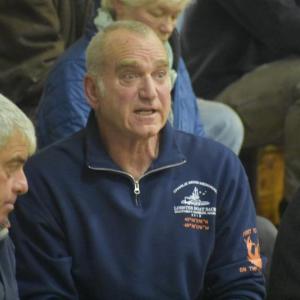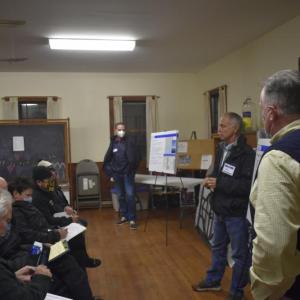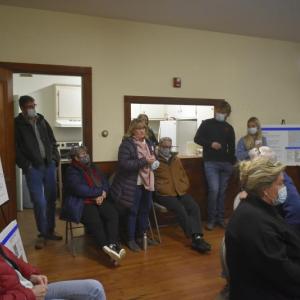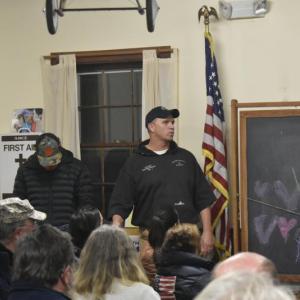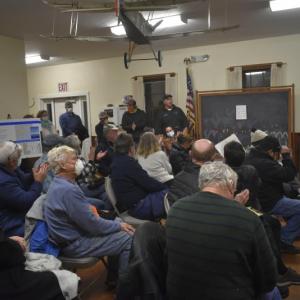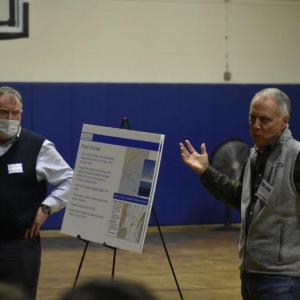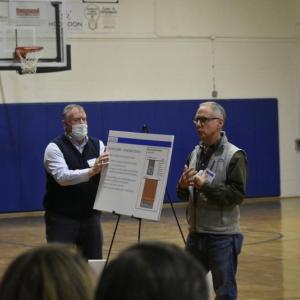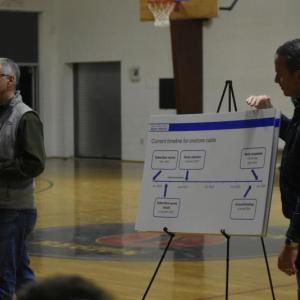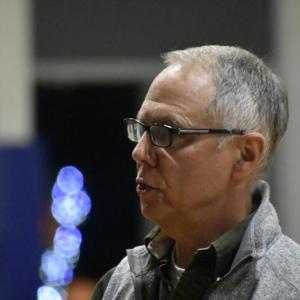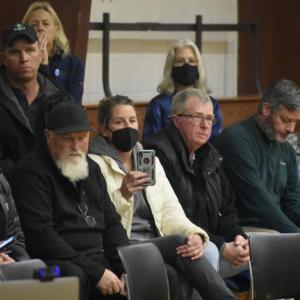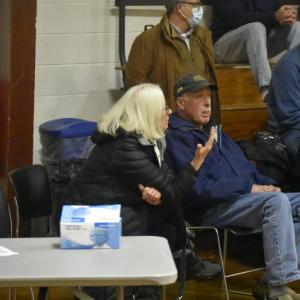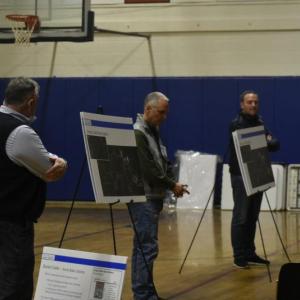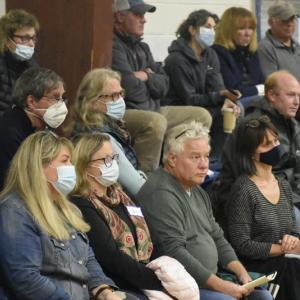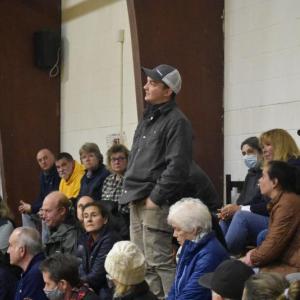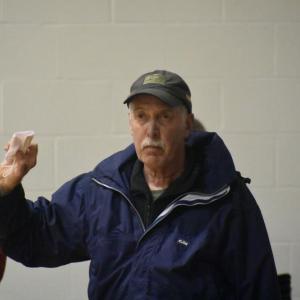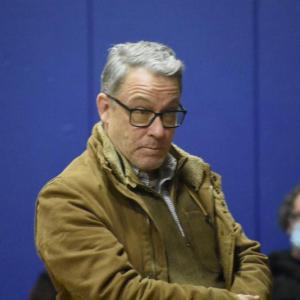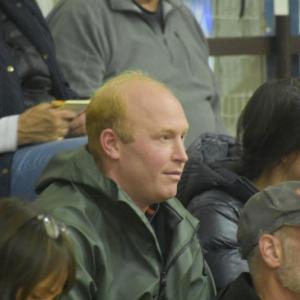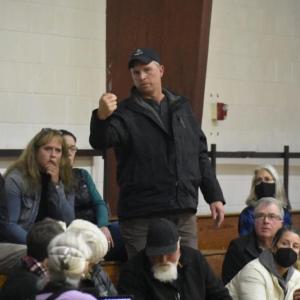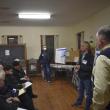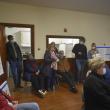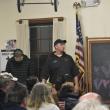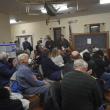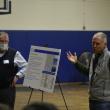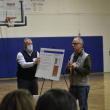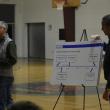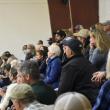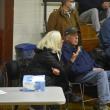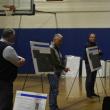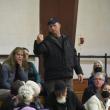‘We screwed up,’ NEAV tells irate East Boothbay community
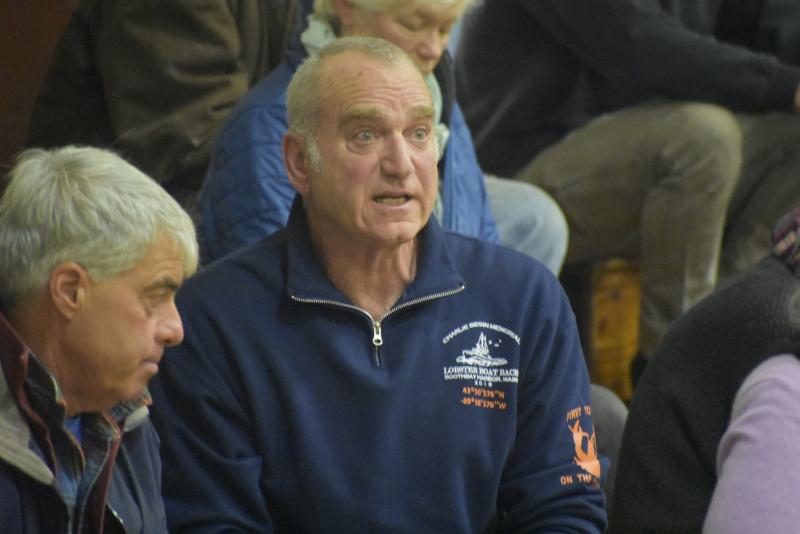 Brad Simmons questions the need for the New England Aqua Ventus project. JOSEPH CHARPENTIER/Boothbay Register
Brad Simmons questions the need for the New England Aqua Ventus project. JOSEPH CHARPENTIER/Boothbay Register
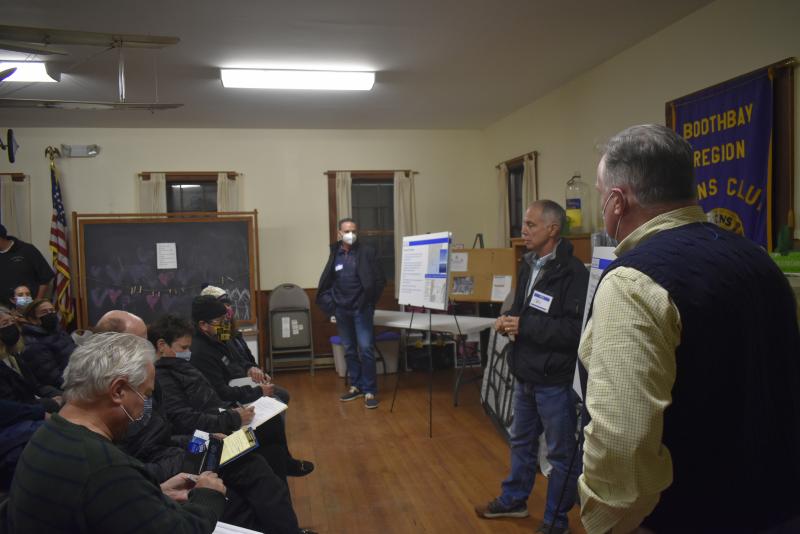 JOSEPH CHARPENTIER/Boothbay Register
JOSEPH CHARPENTIER/Boothbay Register
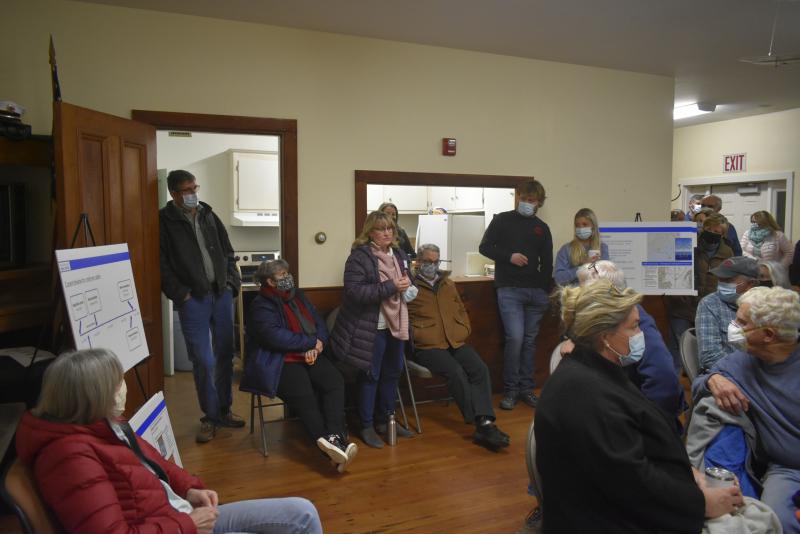 JOSEPH CHARPENTIER/Boothbay Register
JOSEPH CHARPENTIER/Boothbay Register
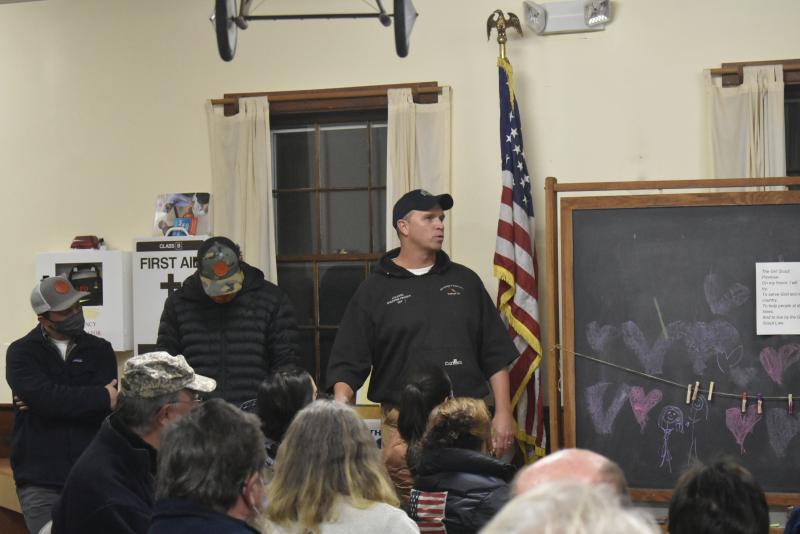 Andrew Morley speaks at the Dec. 2 meeting. JOSEPH CHARPENTIER/Boothbay Register
Andrew Morley speaks at the Dec. 2 meeting. JOSEPH CHARPENTIER/Boothbay Register
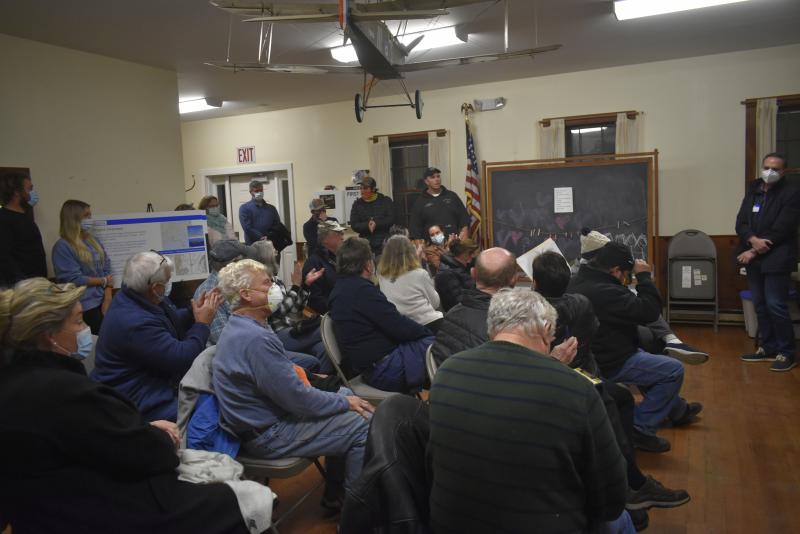 Andrew Morley receives applause. JOSEPH CHARPENTIER/Boothbay Register
Andrew Morley receives applause. JOSEPH CHARPENTIER/Boothbay Register
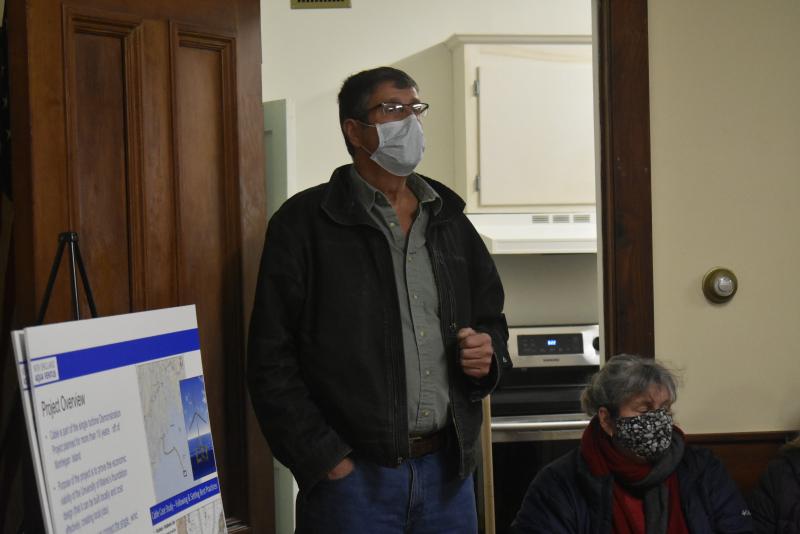 Tim Hodgdon talks about NEAV’s initial offer for his property, and questions if access would be better suited to the community’s wishes. JOSEPH CHARPENTIER/Boothbay Register
Tim Hodgdon talks about NEAV’s initial offer for his property, and questions if access would be better suited to the community’s wishes. JOSEPH CHARPENTIER/Boothbay Register
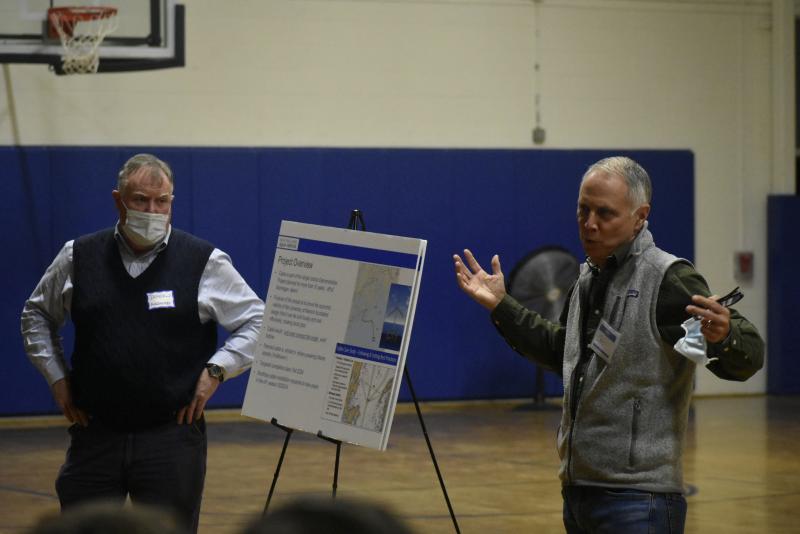 NEAV’s Doug McEachern, left, and Chris Wisseman at the Dec. 3 meeting. JOSEPH CHARPENTIER/Boothbay Register
NEAV’s Doug McEachern, left, and Chris Wisseman at the Dec. 3 meeting. JOSEPH CHARPENTIER/Boothbay Register
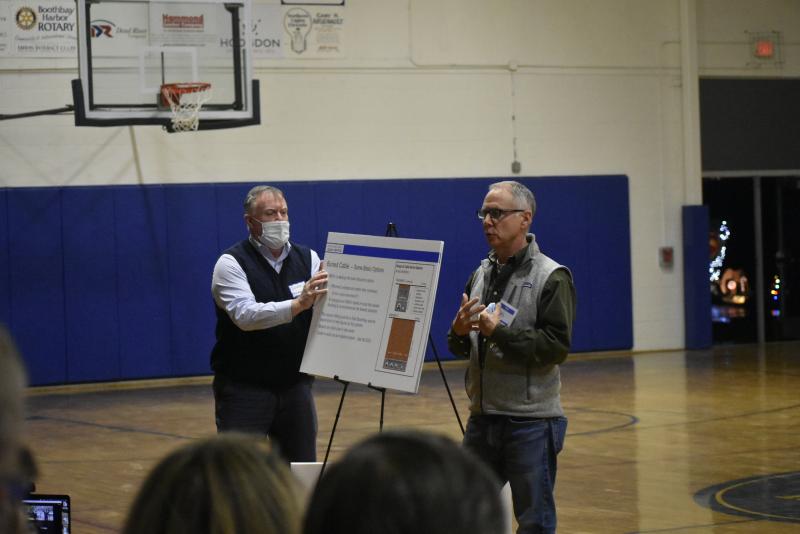 JOSEPH CHARPENTIER/Boothbay Register
JOSEPH CHARPENTIER/Boothbay Register
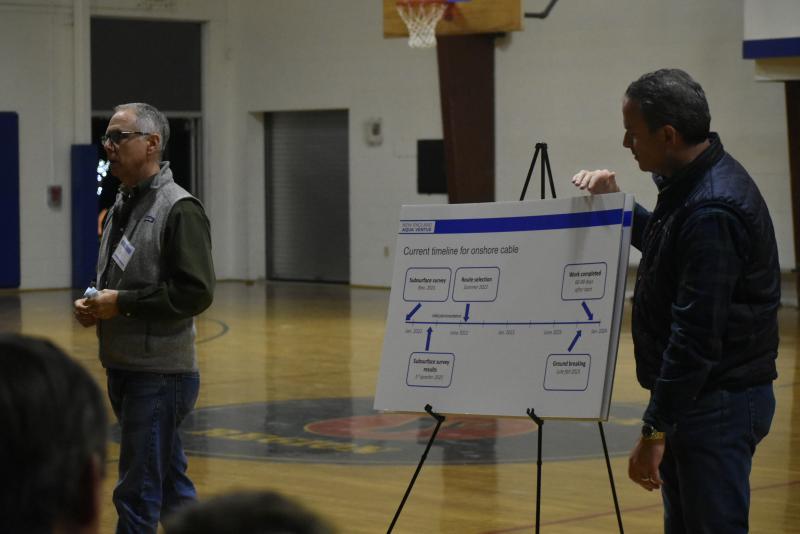 Diamond Offshore CEO Chris Wisseman speaks while Diamond Offshore COO David Deutsch changes slides. JOSEPH CHARPENTIER/Boothbay Register
Diamond Offshore CEO Chris Wisseman speaks while Diamond Offshore COO David Deutsch changes slides. JOSEPH CHARPENTIER/Boothbay Register
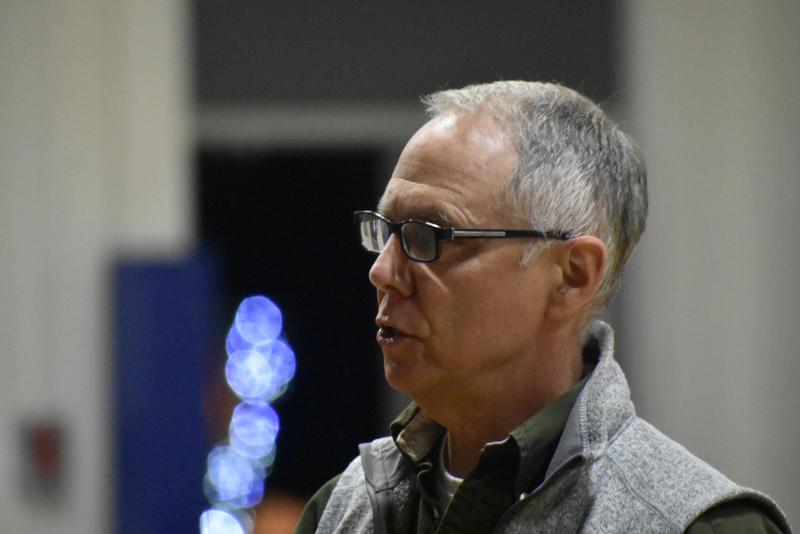 Diamond Offshore CEO Chris Wisseman. JOSEPH CHARPENTIER/Boothbay Register
Diamond Offshore CEO Chris Wisseman. JOSEPH CHARPENTIER/Boothbay Register
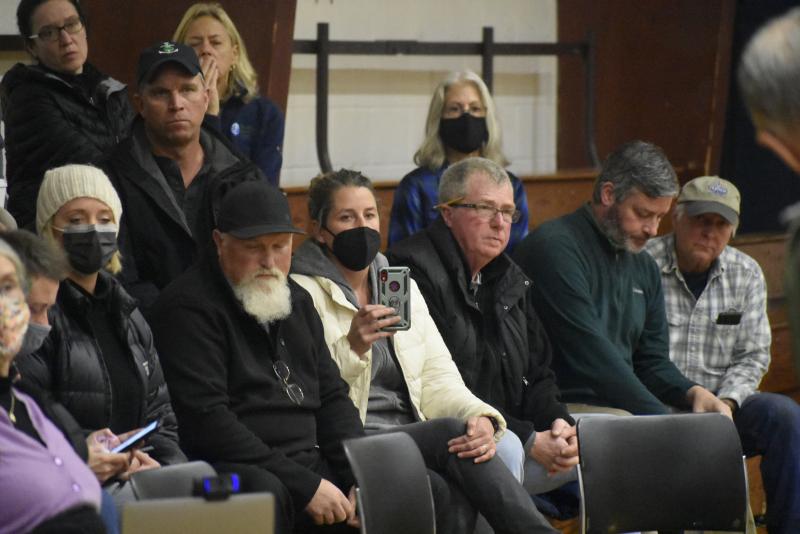 JOSEPH CHARPENTIER/Boothbay Register
JOSEPH CHARPENTIER/Boothbay Register
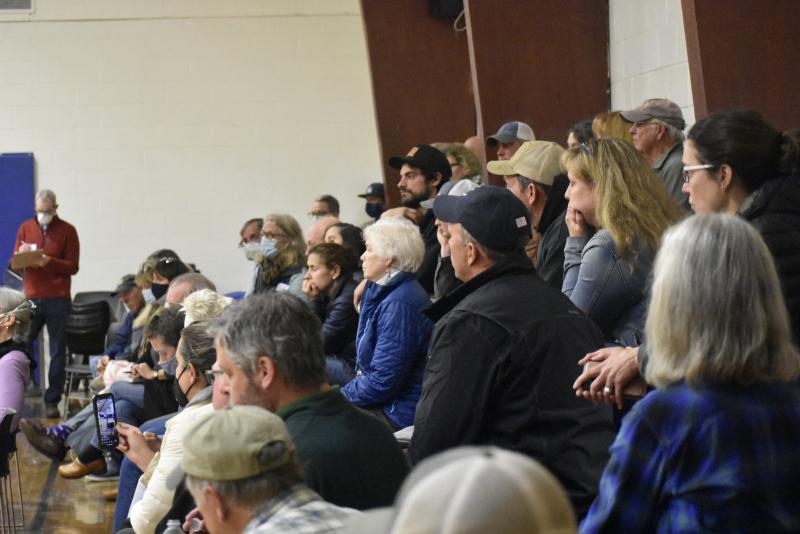 JOSEPH CHARPENTIER/Boothbay Register
JOSEPH CHARPENTIER/Boothbay Register
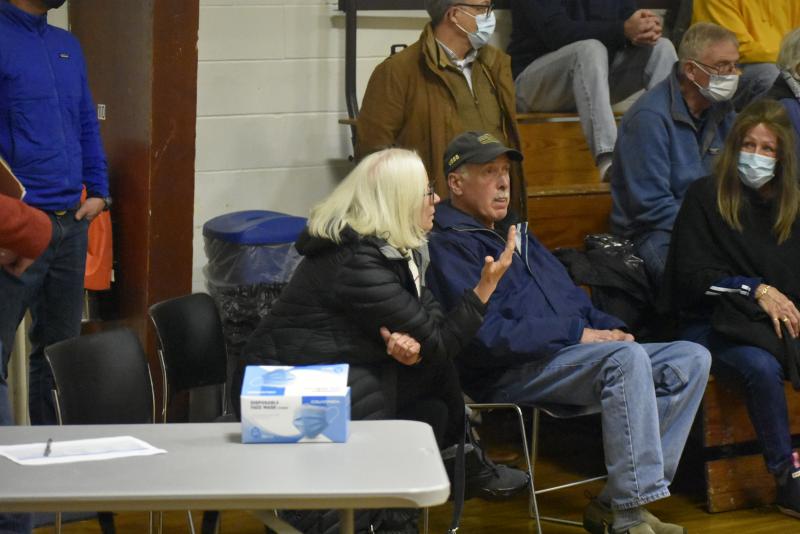 JOSEPH CHARPENTIER/Boothbay Register
JOSEPH CHARPENTIER/Boothbay Register
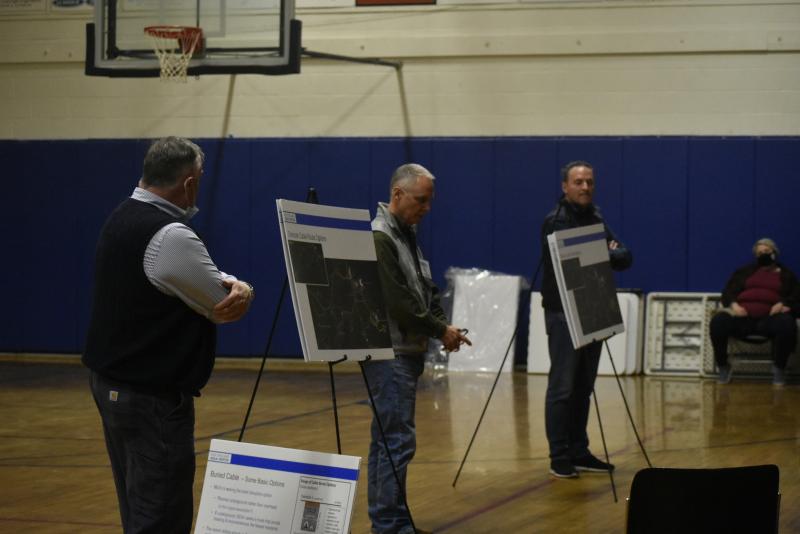 JOSEPH CHARPENTIER/Boothbay Register
JOSEPH CHARPENTIER/Boothbay Register
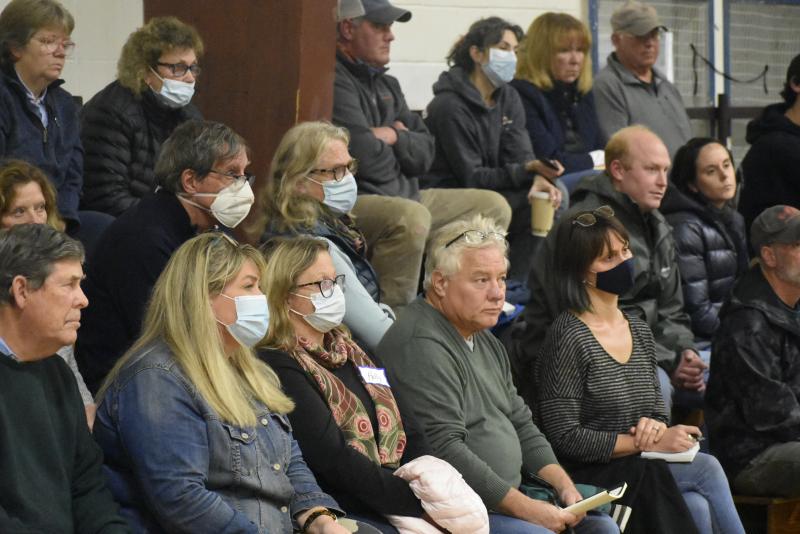 JOSEPH CHARPENTIER/Boothbay Register
JOSEPH CHARPENTIER/Boothbay Register
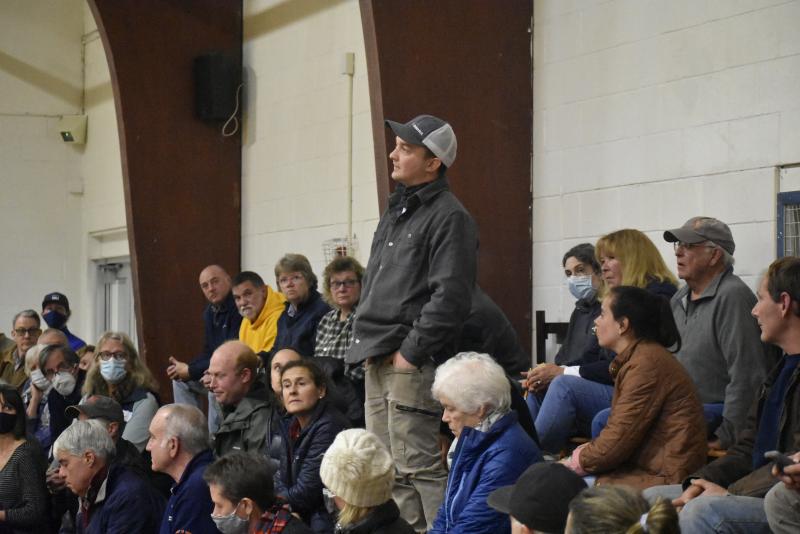 JOSEPH CHARPENTIER/Boothbay Register
JOSEPH CHARPENTIER/Boothbay Register
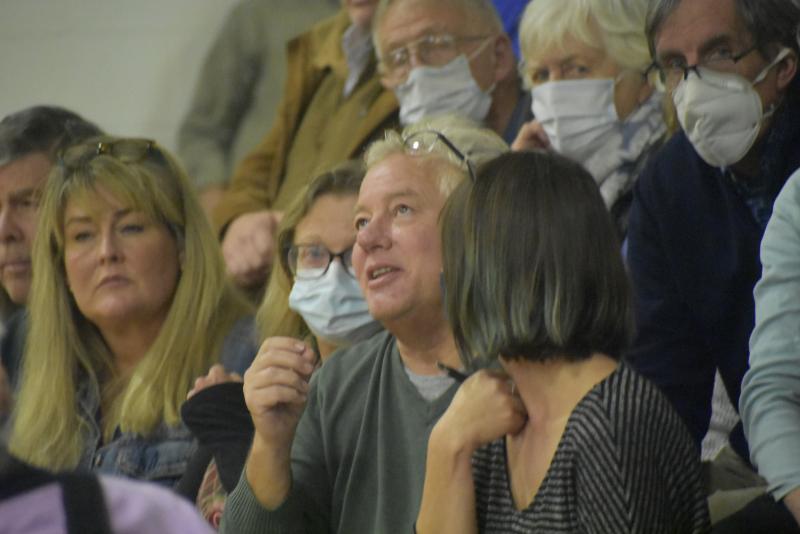 David Howarth. JOSEPH CHARPENTIER/Boothbay Register
David Howarth. JOSEPH CHARPENTIER/Boothbay Register
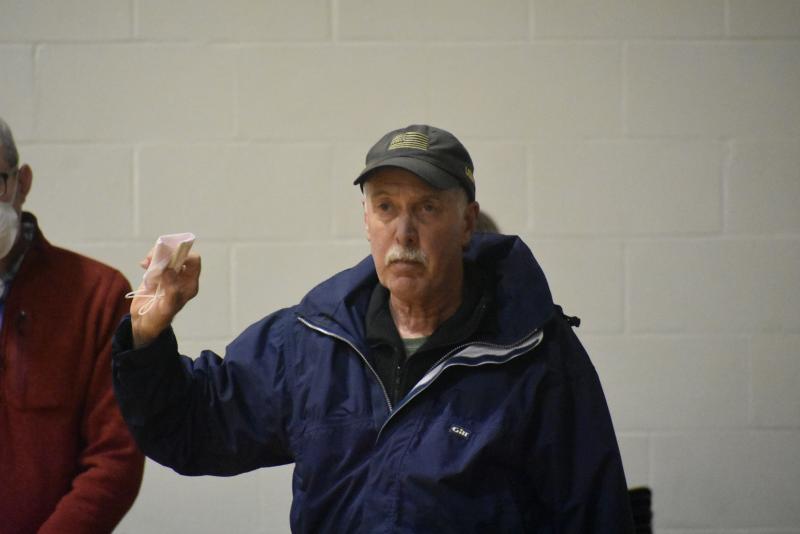 Barry Gibson. JOSEPH CHARPENTIER/Boothbay Register
Barry Gibson. JOSEPH CHARPENTIER/Boothbay Register
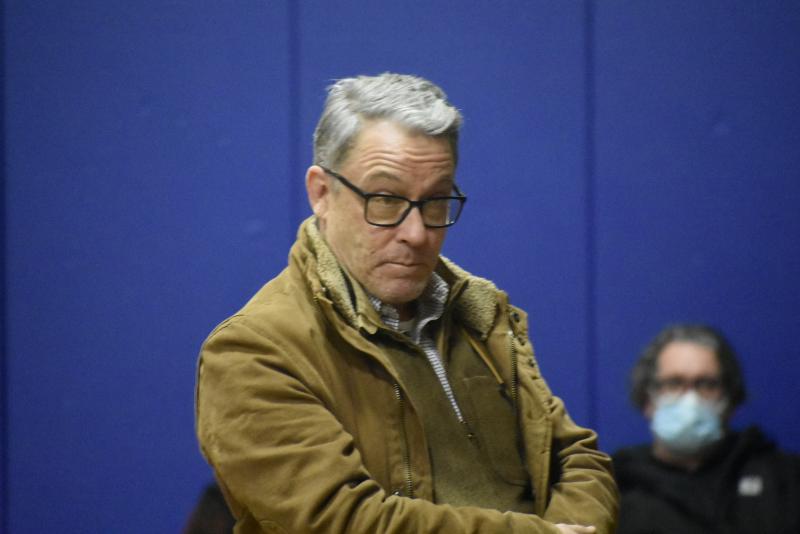 Bigelow Laboratory Research and Administration Vice President Jim McManus. JOSEPH CHARPENTIER/Boothbay Register
Bigelow Laboratory Research and Administration Vice President Jim McManus. JOSEPH CHARPENTIER/Boothbay Register
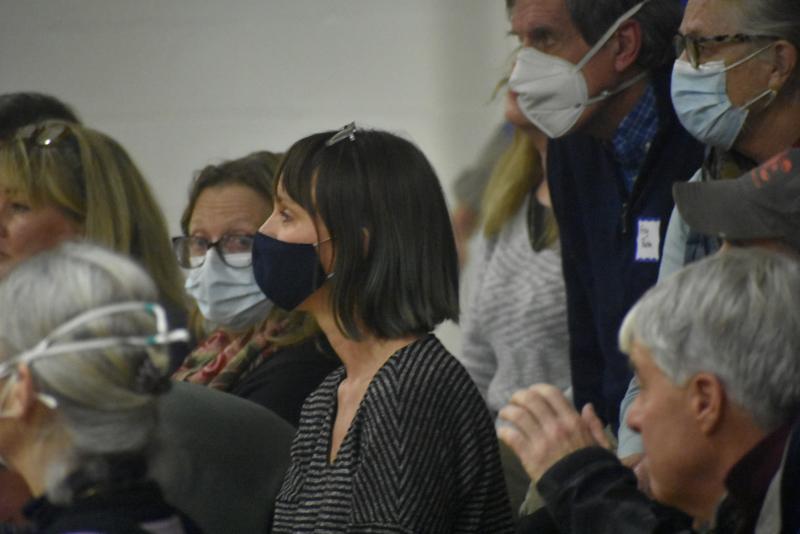 JOSEPH CHARPENTIER/Boothbay Register
JOSEPH CHARPENTIER/Boothbay Register
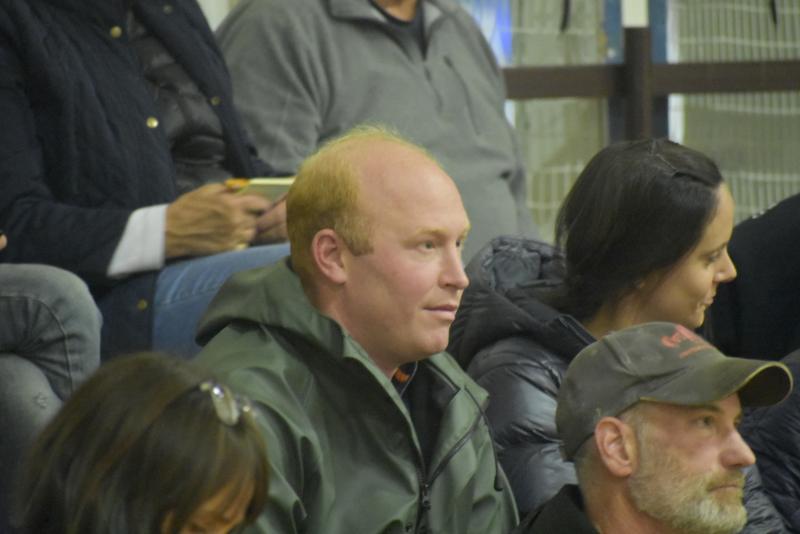 JOSEPH CHARPENTIER/Boothbay Register
JOSEPH CHARPENTIER/Boothbay Register
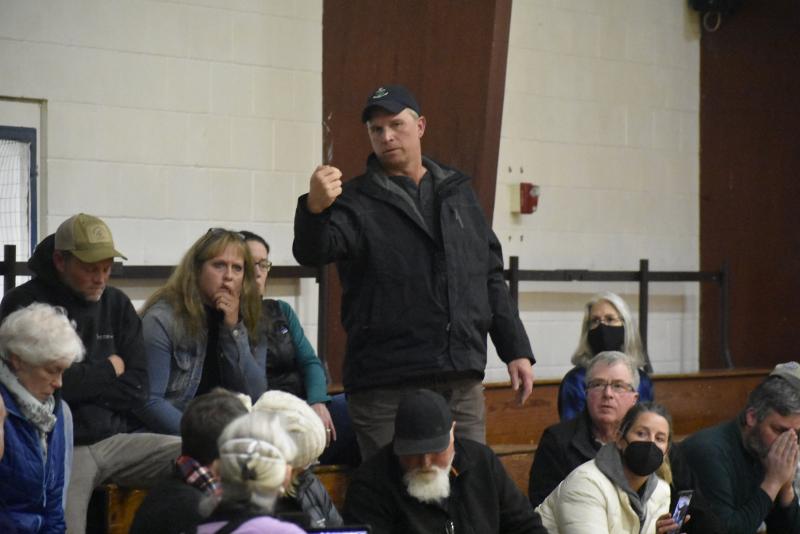 Morley receives another round of applause. JOSEPH CHARPENTIER/Boothbay Register
Morley receives another round of applause. JOSEPH CHARPENTIER/Boothbay Register
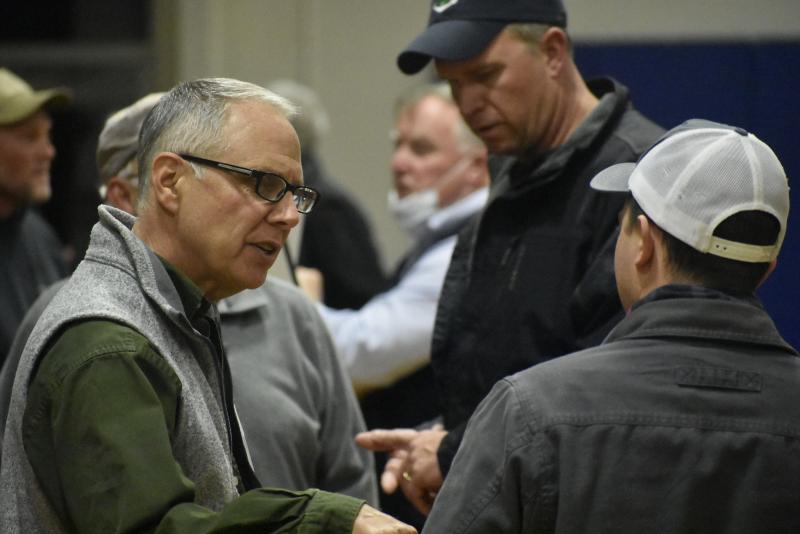 Diamond Offshore CEO Chris Wisseman speaks with residents after the Dec. 3 meeting. JOSEPH CHARPENTIER/Boothbay Register
Diamond Offshore CEO Chris Wisseman speaks with residents after the Dec. 3 meeting. JOSEPH CHARPENTIER/Boothbay Register
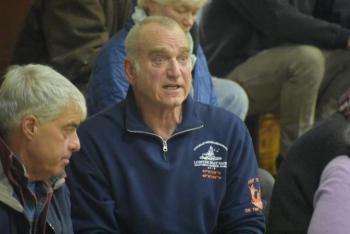 Brad Simmons questions the need for the New England Aqua Ventus project. JOSEPH CHARPENTIER/Boothbay Register
Brad Simmons questions the need for the New England Aqua Ventus project. JOSEPH CHARPENTIER/Boothbay Register
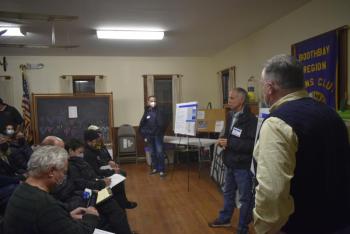 JOSEPH CHARPENTIER/Boothbay Register
JOSEPH CHARPENTIER/Boothbay Register
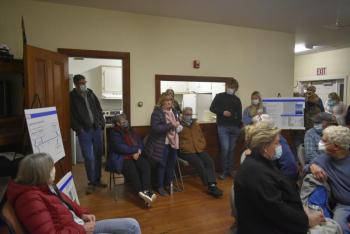 JOSEPH CHARPENTIER/Boothbay Register
JOSEPH CHARPENTIER/Boothbay Register
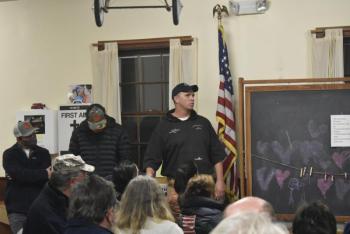 Andrew Morley speaks at the Dec. 2 meeting. JOSEPH CHARPENTIER/Boothbay Register
Andrew Morley speaks at the Dec. 2 meeting. JOSEPH CHARPENTIER/Boothbay Register
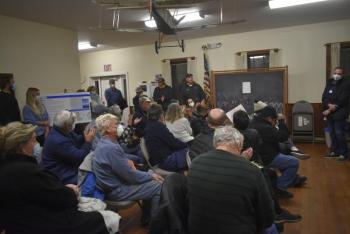 Andrew Morley receives applause. JOSEPH CHARPENTIER/Boothbay Register
Andrew Morley receives applause. JOSEPH CHARPENTIER/Boothbay Register
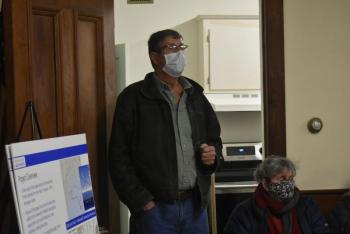 Tim Hodgdon talks about NEAV’s initial offer for his property, and questions if access would be better suited to the community’s wishes. JOSEPH CHARPENTIER/Boothbay Register
Tim Hodgdon talks about NEAV’s initial offer for his property, and questions if access would be better suited to the community’s wishes. JOSEPH CHARPENTIER/Boothbay Register
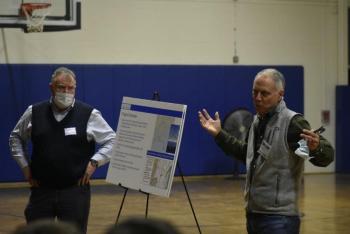 NEAV’s Doug McEachern, left, and Chris Wisseman at the Dec. 3 meeting. JOSEPH CHARPENTIER/Boothbay Register
NEAV’s Doug McEachern, left, and Chris Wisseman at the Dec. 3 meeting. JOSEPH CHARPENTIER/Boothbay Register
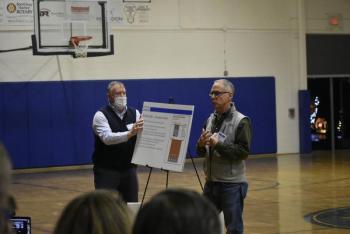 JOSEPH CHARPENTIER/Boothbay Register
JOSEPH CHARPENTIER/Boothbay Register
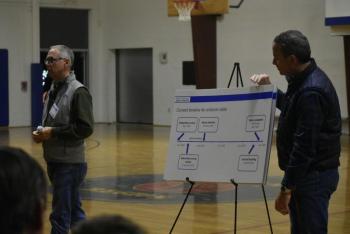 Diamond Offshore CEO Chris Wisseman speaks while Diamond Offshore COO David Deutsch changes slides. JOSEPH CHARPENTIER/Boothbay Register
Diamond Offshore CEO Chris Wisseman speaks while Diamond Offshore COO David Deutsch changes slides. JOSEPH CHARPENTIER/Boothbay Register
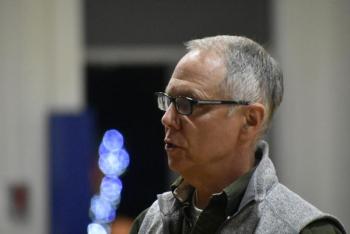 Diamond Offshore CEO Chris Wisseman. JOSEPH CHARPENTIER/Boothbay Register
Diamond Offshore CEO Chris Wisseman. JOSEPH CHARPENTIER/Boothbay Register
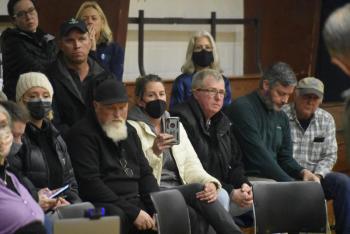 JOSEPH CHARPENTIER/Boothbay Register
JOSEPH CHARPENTIER/Boothbay Register
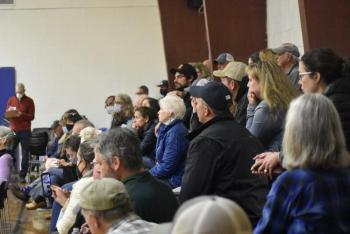 JOSEPH CHARPENTIER/Boothbay Register
JOSEPH CHARPENTIER/Boothbay Register
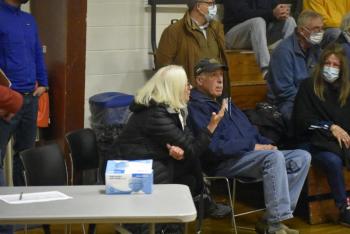 JOSEPH CHARPENTIER/Boothbay Register
JOSEPH CHARPENTIER/Boothbay Register
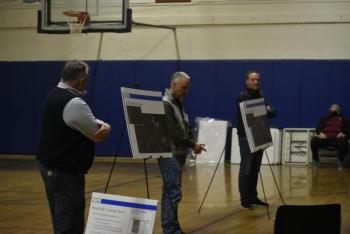 JOSEPH CHARPENTIER/Boothbay Register
JOSEPH CHARPENTIER/Boothbay Register
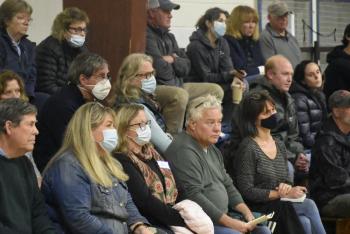 JOSEPH CHARPENTIER/Boothbay Register
JOSEPH CHARPENTIER/Boothbay Register
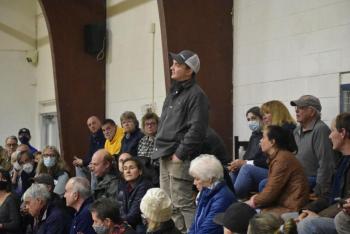 JOSEPH CHARPENTIER/Boothbay Register
JOSEPH CHARPENTIER/Boothbay Register
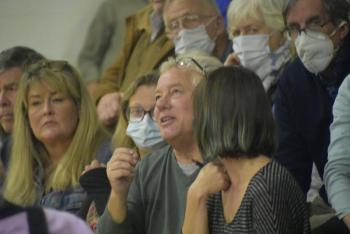 David Howarth. JOSEPH CHARPENTIER/Boothbay Register
David Howarth. JOSEPH CHARPENTIER/Boothbay Register
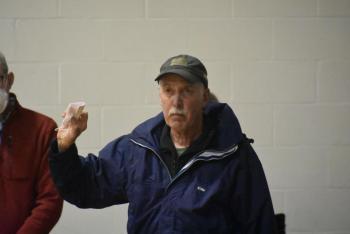 Barry Gibson. JOSEPH CHARPENTIER/Boothbay Register
Barry Gibson. JOSEPH CHARPENTIER/Boothbay Register
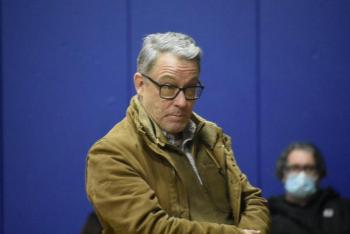 Bigelow Laboratory Research and Administration Vice President Jim McManus. JOSEPH CHARPENTIER/Boothbay Register
Bigelow Laboratory Research and Administration Vice President Jim McManus. JOSEPH CHARPENTIER/Boothbay Register
 JOSEPH CHARPENTIER/Boothbay Register
JOSEPH CHARPENTIER/Boothbay Register
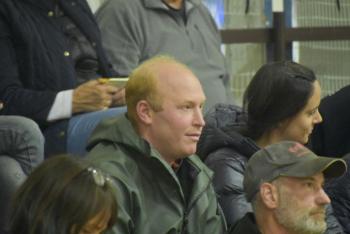 JOSEPH CHARPENTIER/Boothbay Register
JOSEPH CHARPENTIER/Boothbay Register
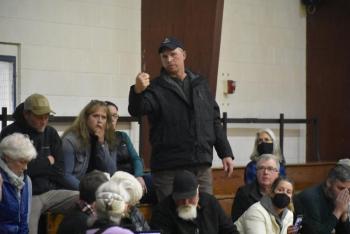 Morley receives another round of applause. JOSEPH CHARPENTIER/Boothbay Register
Morley receives another round of applause. JOSEPH CHARPENTIER/Boothbay Register
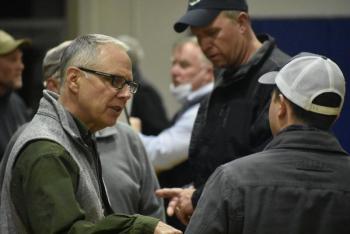 Diamond Offshore CEO Chris Wisseman speaks with residents after the Dec. 3 meeting. JOSEPH CHARPENTIER/Boothbay Register
Diamond Offshore CEO Chris Wisseman speaks with residents after the Dec. 3 meeting. JOSEPH CHARPENTIER/Boothbay Register
New England Aqua Ventus met with East Boothbay residents Dec. 2 and 3 over concerns about recent unannounced survey work for an underground cable. The Diamond Offshore/RWE Renewables/University of Maine partnership hired teams from SGC Engineering and Ransom Engineering to conduct surveys and drilling samples along Murray Hill Road/Mass Avenue areas which included Victoria Street and Sunset Drive. Work began Nov. 11 with the only notice being a press release dated two days in advance and published the same day. The project has already been a source of local contention.
The surveys will help inform plans to connect a three-phase power line from the Bigelow Laboratory shore in East Boothbay down Route 96 to the Boothbay Harbor Central Maine Power substation at the intersection of Routes 96 and 27. The line’s purpose is to connect a wind turbine planned for installation off Monhegan Island.
Diamond Offshore CEO Chris Wisseman, Diamond COO David Deutsch and project manager Duncan McEachern were met by around 30 residents at the East Boothbay fire station Dec. 2 and over 50 at Boothbay Region YMCA Dec. 3. The beginning of both meetings ran about the same with apologies from NEAV leadership, an overview of the project and an explanation of the project’s current phase. The rest of each two-plus hour meeting was filled with unified anger, rebuke and a demand for answers.
However, since survey work has just finished and reports are not complete, Wisseman said there are still no answers about where the route will go and how the line will be connected to the substation. So, while the meeting is overdue because of NEAV’s poor communication, it is also premature, he said.
“We're having this meeting really largely out of courtesy for the community. A number of community members said, ‘Hey you really owe it to the community to tell it what is going on … We want to be much more neighborly than that in the future. It's not a good start … We screwed up.”
The cable installations will not break ground until fall 2023 at the earliest, said Wisseman. The target date was chosen, as most have been, to avoid the region's peak tourism season. The reason for putting the cable underground was the assumption residents would not want to see more power lines overhead; and the survey work was to find any ledge which might force blasting on that route, said Wisseman. Blasting is the last option for building a route, he said.
Ideally, the cable trench will be dug 18 inches deep and 18 inches wide for a six to eight-inch PVC-like pipe to carry the cable. In marshy areas, the trench might be dug more like three feet by three feet to account for debris sliding back into the dug trench, Wisseman said. The surveying along Murray Hill Road, Sunset and Mass Avenues and Virginia Street was to see if alternate routes were technically viable.
“If it is, we'll be coming back to talk to some of you and if it isn't, we'll go back to this route which is a little bit more technically complicated.”
When the 20-year project is finished and if it is not renewed, the seabed and underground land cables will be removed unless someone finds a reason to keep them there, he said. As a demonstration project approved for one of only three such locations in the Gulf of Maine, only one turbine will be installed with an apparatus capable of supporting just the one turbine, he said.
Like most East Boothbay residents who spoke, Andrew Morley was also upset Bigelow Lab entered a binding easement without first bringing the community in for a discussion. Morley said the oversight might have been out of everyone’s greatest intentions, but Bigelow and the community will be the ones to reap those consequences once NEAV has laid its groundwork.
Bigelow Laboratory President and CEO Deborah Bronk apologized for its role in unsettling the community. The decision to let NEAV land its cable came out of Bigelow’s mission toward a more sustainable future, she said. With NEAV’s and her board’s permissions, Bronk said Bigelow accepted $50,000 for the easement and a further $10,000 per year over 20 years should NEAV elect to land the cable there, she said. Bigelow's understanding was once the cable left the property, it would continue underground along a public corridor.
“We didn't do this for the money. We've already spent more than that in evaluating this in staff time … If I could go back and do this differently I would. I thought about this myself ... roadwork happens and then it goes away and I've never paid much attention to it, so the amount of angst I've caused this community is – I am very, very sorry. We were so focused on the waterside that we thought 'Oh, they'll bury it. This is great.' Honestly, we thought that would take care of everything. Now, clearly I was wrong.”
Morley asked Wisseman if rumors are true that NEAV seeks property along Route 96 to install a substation to convert the power before it reaches the existing substation in Boothbay Harbor. Wisseman said they were looking.
“So the creep's already starting to happen,” said Morley. “Just the look in your eyes told me all I need to know. There was no talk of a substation before, just a cable. You haven't even inked the deal and there's already more intrusive things on the horizon. Do you see what I'm saying?”
“I see the picture you've painted,” Wisseman replied.
“I didn't paint it, you painted it. I just connected the dots,” Morley said as the room erupted into applause. “I'm not trying to be difficult. I'm just telling you this is how it starts and that's how it ends.”
Resident Scott Adams asked Wisseman what everyone can expect NEAV to do in the community despite all the challenges and concerns the project has already caused. Wisseman said having spent summers in Maine since he was a kid, he has witnessed the breakdown of the local ecology and that is why he has been in the renewables industry for 40 years.
“I believe fundamentally we have to stop screwing up this planet. This is what led us to work with Bigelow. RWE, (an) old-fashioned company trying to pivot and do the right thing. Mitsubishi, same thing. We're not investing in fossil fuel power plants. In my view we're part of the solution (harnessing) … the money of big international companies. We're having it focused on Maine to try and figure out the solutions in a way that makes jobs for Mainers.”
NEAV is willing to look at the needs of the community as plans for the underground cable come together, Wisseman said. Things like repaving Route 96 and widening the road for bike paths – both items in Boothbay’s comprehensive plan – have been mentioned, said Wisseman. “We are open ears. Tell us.”
As the first meeting came to a close, Adams advised fellow residents not to get lost in making demands before NEAV has solid plans for its route to the Boothbay Harbor substation. Criticism and demands of nonexistent plans will only gain them platitudes, he said.
“Until they have a plan, we won't know whether they can do it or they can't do it and what the impact is going to be … That's when you start to protest and that's when the environmental impact statement is … Then you can cut the plan apart or at least address the aspects you don't like and you've got a better negotiation stance.”
Said Morley in the second meeting, before another round of applause, “I appreciate you coming and apologizing, but there's an old saying that goes it's easier to ask forgiveness than permission … Now, I like seeing people move here from away, they move here because they love the way it is here. Unfortunately … you get people who come here and decide we're very backward, we don't know what we're doing, we can't appreciate the bigger picture, so they decide for us what's right ... Bigelow gave these guys the key to the city with no idea what they were going to do once the gate was open.”

